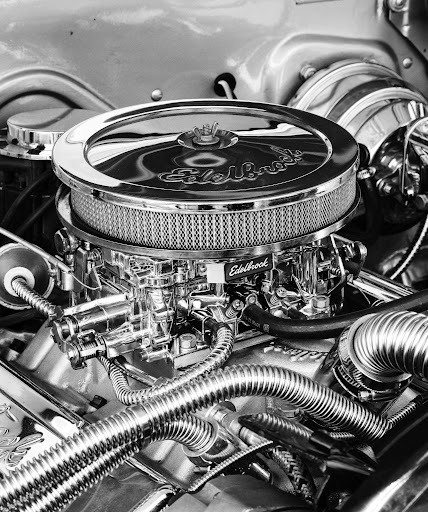In automobile engines, the automotive liner serves as a moving surface for the piston inside the cylinder. It is one of a cylinder’s most significant functional surfaces. This surface must be durable enough to survive the wear and tear caused by the piston’s movement against it.
The liner is sometimes constructed separately from the cylinder, and other times it is purchased as part of the cylinder.
Automotive Industry Overview
Companies and organisations involved in the design, development, production, marketing, and sale of passenger cars make up the automotive industry. Fiat, Ford, GM, Honda, Toyota, and Volkswagen are all major corporations. It is one of the most important economic sectors globally, with yearly revenues exceeding $2 trillion.
The vehicle manufacturing business is regarded as a high-capital and high-labour-intensive industry. The automotive industry encompasses all businesses and activities involved in automobiles, including the majority of their components, such as engines and bodywork, but omitting tyres, batteries, and fuel.
Passenger cars and light trucks, such as pickups, vans, and sport utility vehicles, are the mainstays of the sector. Commercial vehicles (such as delivery trucks and huge transport trucks, commonly referred to as semis) are of secondary importance to the industry. The articles automobile, truck, bus, and motorcycle explore the design of modern automobiles, while gasoline engines and diesel engines describe automotive engines.
Significant Costs In an Automobile Industry
The following are the essential costs associated with producing and marketing automobiles:
- Labor
- Material: Steel, aluminium, dashboards, seats, tyres, and other materials are obtained from suppliers.
- Automobile companies spend billions on printing and broadcast advertising each year, and they also spend a lot of money on market research to predict consumer trends and preferences.
History of Automobile Industries
Despite its limited history compared to that of many other businesses, the automotive industry’s impact on history from the twentieth century has piqued its curiosity among the people.
Despite the fact that the automobile industry was started in Europe in the late nineteenth century, the United States dominated the global industry during the first half of the twentieth century thanks to the introduction of efficient mass manufacturing techniques. However, the situation changed dramatically in the second half of the twentieth century, as western European countries and Japan emerged as major producers and exporters.
What Are Automotive Liners Used For?
Typically, the liners in a gasoline-powered engine are not replaceable. As a result, if they wear out, the complete cylinder will need to be replaced. In diesel engines, this is avoided since the automobile liners are built separately from the cylinders and can be removed if it needs replacements.
The automotive liner serves as a sliding surface for the piston and must also endure the heat of combustion at the cylinder’s top. Companies like FabAuto Liner can provide you with high-quality liners, which can last long and efficiently support your engine.
The automotive cylinder lining, in conjunction with the piston, must transmit heat out from the cylinder without excessively boosting the cylinder’s temperature. Because the liner surface is always in contact with the coolant in the wet cylinder liners, the cylinders can sustain much higher levels of heat and performance demand.
The cylinder and its liner work together to keep the gas inside it compressed and prevent it from escaping, resulting in consistent pressure and temperature.
Liners for Diesel Engines in Automobiles
- Diesel engines typically have replaceable vehicle liners and are built from a variety of metals and alloys, depending on the purpose for which they are intended.
- A thin-walled dry liner is preferred for lighter diesel automobile engines because the small cylinder bore distance makes this easier to achieve.
- As it has anti-galling properties, a nitriding automotive liner is used in diesel engines because it provides a smooth surface against which the piston can slide up and down while it is in working condition.
- Anti-galling features of phosphate coated vehicle liners with standards for wet and dry liners make them helpful in diesel automobile engines.
- A chromium-plated wet liner is useful in diesel engines to avoid cavitation.
Wet Liners vs Dry Liners
- The two types of automotive liners that are manufactured for use in vehicles are wet and dry liners.
- For a variety of reasons, wet liners are thought to have an advantage over dry liners:
- A wet liner is easier to replace than a dry liner, and it does not necessitate the use of any special tools.
- It is more effective at keeping the piston and cylinder from overheating since it is in continual touch with the coolant.
- Because a moist liner is only held in place at the top by a flange, it has more room to expand when the cylinder heats up.
- A wet liner can be given final touches before being installed, whereas a dry liner cannot be treated this way before being installed due to the risk of shrinkage stress damage.
Conclusion
Customer’s increasing demands for efficiency and fuel savings have prompted several car liner exporters and manufacturers to offer higher-quality vehicle liners that can avoid any damage to the engine’s cylinder walls. This is an excellent argument to employ them in automotive engines since they reduce the cost of maintenance and repair by avoiding the need to replace engine blocks.

